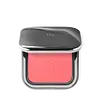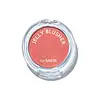What's inside
What's inside
 Key Ingredients
Key Ingredients

 Benefits
Benefits

 Concerns
Concerns

 Ingredients Side-by-side
Ingredients Side-by-side

Talc
AbrasiveLauroyl Lysine
Skin ConditioningPolymethyl Methacrylate
Mica
Cosmetic ColorantDimethiconol Stearate
EmollientCaprylic/Capric Triglyceride
MaskingDimethicone
EmollientTrimethylsiloxysilicate
EmollientCaprylyl Glycol
EmollientPhenoxyethanol
PreservativeMagnesium Myristate
Hexylene Glycol
EmulsifyingDimethicone Crosspolymer
Emulsion StabilisingCI 15850
Cosmetic ColorantCI 19140
Cosmetic ColorantCI 77491
Cosmetic ColorantCI 77007
Cosmetic ColorantCI 77891
Cosmetic ColorantPolymethyl Methacrylate
CI 77891
Cosmetic ColorantMica
Cosmetic ColorantDimethicone/Vinyl Dimethicone Crosspolymer
Skin ConditioningDimethicone
EmollientDiphenylsiloxy Phenyl Trimethicone
Skin ConditioningHydrogenated Poly(C6-14 Olefin)
EmollientPhenyl Trimethicone
Skin ConditioningDiisostearyl Malate
EmollientSilica
AbrasiveCI 19140
Cosmetic ColorantCI 15985
Cosmetic ColorantAluminum Hydroxide
EmollientPolymethylsilsesquioxane
CI 73360
Cosmetic ColorantCaprylyl Glycol
EmollientGlyceryl Caprylate
EmollientCI 77491
Cosmetic ColorantTriethoxycaprylylsilane
Lauroyl Lysine
Skin ConditioningTocopherol
AntioxidantPolymethyl Methacrylate, CI 77891, Mica, Dimethicone/Vinyl Dimethicone Crosspolymer, Dimethicone, Diphenylsiloxy Phenyl Trimethicone, Hydrogenated Poly(C6-14 Olefin), Phenyl Trimethicone, Diisostearyl Malate, Silica, CI 19140, CI 15985, Aluminum Hydroxide, Polymethylsilsesquioxane, CI 73360, Caprylyl Glycol, Glyceryl Caprylate, CI 77491, Triethoxycaprylylsilane, Lauroyl Lysine, Tocopherol
 Reviews
Reviews

Ingredients Explained
These ingredients are found in both products.
Ingredients higher up in an ingredient list are typically present in a larger amount.
Caprylyl Glycol is a humectant and emollient, meaning it attracts and preserves moisture.
It is a common ingredient in many products, especially those designed to hydrate skin. The primary benefits are retaining moisture, skin softening, and promoting a healthy skin barrier.
Though Caprylyl Glycol is an alcohol derived from fatty acids, it is not the kind that can dry out skin.
This ingredient is also used as a preservative to extend the life of products. It has slight antimicrobial properties.
Learn more about Caprylyl GlycolCI 19140 is also known as Tartrazine. Tartrazine is a synthetic dye used in cosmetics, foods, and medicine to add a yellow color.
Tartrazine is created from petroleum and is water-soluble.
Some people may experience allergies from this dye, especially asthmatics and those with an aspirin intolerance.
Learn more about CI 19140Ci 77491 is also hydrated iron III oxide. It's sole purpose is to give a red/pink hue to products.
Iron III oxides are classified as inorganic chemicals for coloring.
Synthetically created Ci 77491 is considered safer than those naturally found. This is because the synthetically created version may contain less impurities. Iron oxides are generally non-toxic and non-allergenic.
Learn more about CI 77491Ci 77891 is a white pigment from Titanium dioxide. It is naturally found in minerals such as rutile and ilmenite.
It's main function is to add a white color to cosmetics. It can also be mixed with other colors to create different shades.
Ci 77891 is commonly found in sunscreens due to its ability to block UV rays.
Learn more about CI 77891Dimethicone is a type of synthetic silicone created from natural materials such as quartz.
What it does:
Dimethicone comes in different viscosities:
Depending on the viscosity, dimethicone has different properties.
Ingredients lists don't always show which type is used, so we recommend reaching out to the brand if you have questions about the viscosity.
This ingredient is unlikely to cause irritation because it does not get absorbed into skin. However, people with silicone allergies should be careful about using this ingredient.
Note: Dimethicone may contribute to pilling. This is because it is not oil or water soluble, so pilling may occur when layered with products. When mixed with heavy oils in a formula, the outcome is also quite greasy.
Learn more about DimethiconeThis ingredient comes from a fatty acid (lauric acid) and amino acid (lysine). It is used to add a silky feel to cosmetics.
According to a manufacturer, its fatty acid base leaves a silky feeling on the skin. It also has emollient properties because of this. Emollients help soften skin by preventing water from evaporating.
Lauroyl lysine is barely soluble in water.
Learn more about Lauroyl LysineMica is a naturally occurring mineral used to add shimmer and color in cosmetics. It can also help improve the texture of a product or give it an opaque, white/silver color.
Serecite is the name for very fine but ragged grains of mica.
This ingredient is often coated with metal oxides like titanium dioxide. Trace amounts of heavy metals may be found in mica, but these metals are not harmful in our personal products.
Mica has been used since prehistoric times throughout the world. Ancient Egyptian, Indian, Greek, Roman, Aztec, and Chinese civilizations have used mica.
Learn more about MicaThis ingredient is also known as PMMA. It is a polymer microsphere, composed of tiny, perfectly spherical particles formed from repeating units.
In cosmetics, PMMA is mainly used to give a soft or blurring effect. The transparent particles are able to scatter light and help reduce the appearance of fine-lines and imperfections.
PMMA is also able to enhance the texture of products by add a smooth feel.
Learn more about Polymethyl Methacrylate